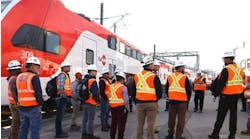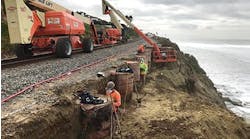Public transit ridership across Canada set another all-time high last year with record growth. According to the Canadian Urban Transit Association (CUTA), Canadians took 1.99 billion trips on 2011, a ridership increase of 4.56 percent from the previous year. This surge represents the largest single year-over-year ridership increase in the last decade, with the addition of well over 86 million new trips.
“The increase in transit ridership in 2011 was experienced across all transit modes, in communities large and small, bringing Canadian public transit ridership to the brink of 2 billion annual trips for the first time ever,” said CUTA President and CEO Michael Roschlau. “More Canadians are choosing public transit to save money when gas prices are high. They are seeking alternative forms of transportation, and this is a good sign.”
There are various factors typically associated with transit ridership, such as employment and gas prices. The economic downturn and spike in unemployment in 2009 resulted in a leveling off of ridership, but there was no decrease, as experienced in other countries. Transit ridership growth rebounded sharply in 2010 and strengthened further last year.
“We know there is a strong correlation between economic activity and transit ridership,” says CUTA Chair Bob Paddon. “An increase in public transit can be an indicator of an economic upturn. Transit ridership rises because employment is linked to economic growth and Canadians are travelling to work on a daily basis using buses, trains and ferries.”
“Also contributing to strong public transit use is high quality, reliable service and the use of modern real time technology. It seems that everyone has a smart phone these days, and there are many apps that map out bus routes, subway stations, and show riders where the next bus or train currently is and when it will arrive,” says Paddon. “However, delivering and sustaining quality service levels and modern infrastructure requires a long-term sustainable and reliable investment.”
A recent national survey released by CUTA shows that Canada’s transit infrastructure needs $53 billion over the next five years. In the last decade, the federal government has given high priority to improving transit infrastructure and services and investment has grown substantially, now averaging $1 billion per year. Thanks to strong commitments by all orders of government, three-quarters of the total needs can be drawn from existing funding streams. The remaining $13.5 billion will have to come from new or additional sources.
“We praise all level of governments for their contributions to public transit over the last 10 years. However, we know that much more needs to be done and sustainable investment is needed to preserve and maintain today’s infrastructure needs and to serve an ever-growing number of travellers,” concludes Roschlau.


